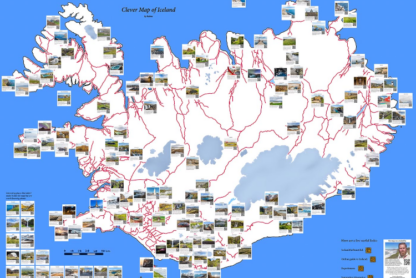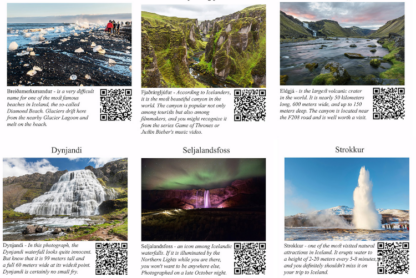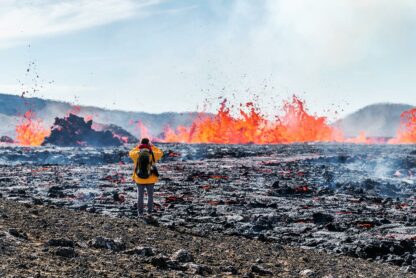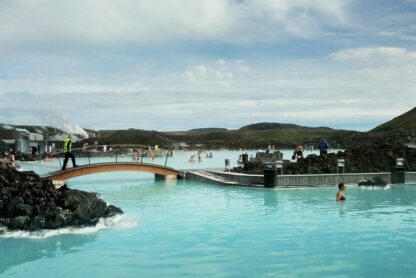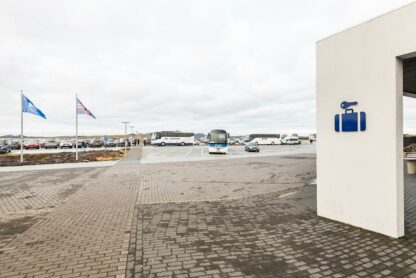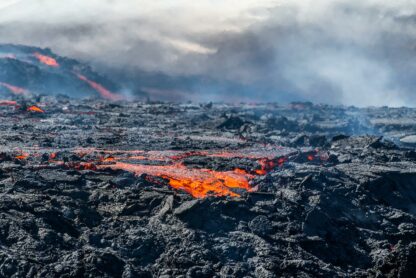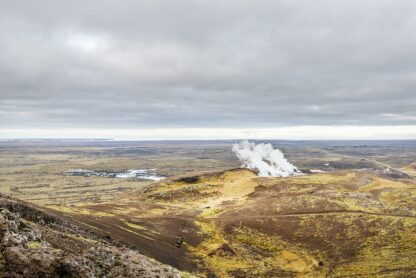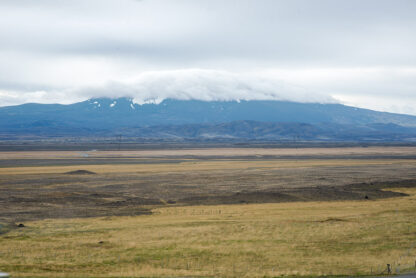On the early morning of July 16, the ground on the Reykjanes Peninsula split open once again, marking the 12th volcanic eruption in this area in the past four years.
It’s a beautiful sight. The easiest access to the crater is from Road 43 north of the Blue Lagoon, ideally from this parking lot: 63.923776, -22.419274. From there, you can see the volcanic crater and even head toward it in an easterly direction. The trail across the 800-year-old lava field is about 1,500 meters long, bringing you within approximately 2.5 kilometers of the crater. Beyond that point, there is a new lava field, and it is currently unsafe to walk on it.
Another option is to park at the original Fagradalsfjall parking lot: 63.866072, -22.316823 – from where you can head northwest along the road for off-road vehicles. After about 4 kilometers, you will see the volcano and can walk across the old lava field toward it and find a viewpoint, or continue all the way to this point: 63.899418, -22.315079, where there is a mobile geological station and a good view of the crater. You will also be very close to the flowing lava. The total distance to this point is 4.7 kilometers.
The volcanic crater is visible from the road at 63.864527, -22.3311, so before setting off, you can check that the volcano is still active and avoid making the journey in vain.
There is another parking lot beyond the road at 63.86501, -22.324539, but you have to approach it from the south via an unpaved road starting here: 63.857969, -22.343051. This is useful if you want to save on parking fees.
If I were to compare both options: from road no. 43 you can see the crater right from the parking lot, and it’s up to you how close you want to get. The lava also flows away from you, so no thermal layer forms above the surface, making this a better spot for truly good night landscape photography.
The second option takes you closer to the crater, right next to the lava field, making your personal experience more intense. From the viewing hill, you also have a direct view into the crater, which is a once-in-a-lifetime experience. However, due to the hot air above the lava field, the air shimmers, making it difficult to take sharp, detailed photos of the crater.
The area is covered by a fairly dense cloud of volcanic ash, and the true beauty of the volcano becomes most visible after dark, usually around 10 p.m.
